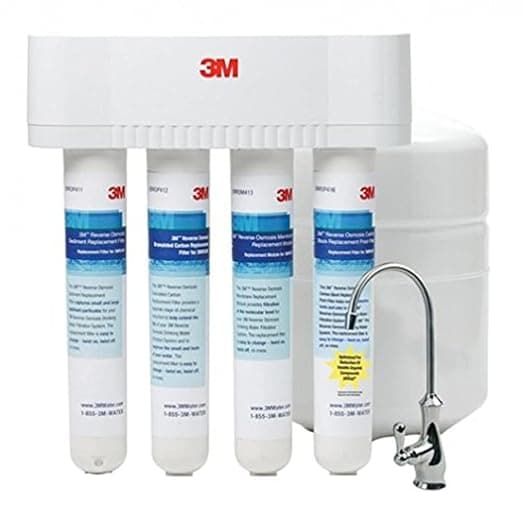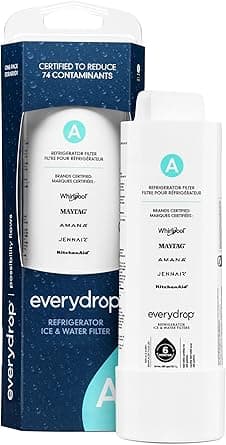Wells Tap Water Quality Report
Wells's water has 10 contaminants above EPA MCLGs. We recommend using a certified water filter.
Utility
WELLS WATER SYSTEM
People Served
2,343
MCL Violations
0
Last Updated
Jul 6, 2022
Is Wells Tap Water Safe to Drink?
Wells's water has 10 contaminants above EPA health-based guidelines. We strongly recommend using a certified water filter to reduce exposure to these contaminants. Check our filter recommendations below for NSF-certified options that can remove the specific contaminants found in Wells's water.
The data below shows test results from WELLS WATER SYSTEM, which serves 2,343 people in the Wells area. Water quality testing is conducted regularly and reported to the EPA. This report was last updated Jul 6, 2022.
Wells Water Quality Test Results
Key Water Quality Metrics
Contaminants Detected
⚠️ Contaminants Above EPA MCLG (10)
Lead
What is Lead?
Naturally occurring heavy metal commonly found in tap water
Health Effects
Health protective benchmarks for oral exposure to lead are based on delays in physical or mental development for children and infants, and impacts to the kidneys and high blood pressure for adults. Children are especially susceptible to the effects of lead. Even low levels of lead can damage the brain and nervous system, slow development, and lead to problems with learning, behavior, hearing, and speech. In adults, lead can lead to hypertension, reproductive problems, neurological disorders, decreased kidney function and muscle and joint pain. Exposure to lead can also cause anemia and impact the immune system for both children and adults. The EPA classifies lead as a probable human carcinogen.
Affected Organs
Common Sources
Bromodichloromethane
What is Bromodichloromethane?
Member of trihalomethanes (THMs) that form in water treated with chlorine
Health Effects
Health protective benchmarks for BDCM are based on carcinogenicity and liver toxicity observed in animal studies. The EPA has classified BDCM as a probable human carcinogen. Results from animal studies also suggest that kidney, immune system, spleen, and developmental toxicity are associated with exposure to BDCM. BDCM has been shown to produce DNA changes (genotoxicity) in laboratory studies.
Affected Organs
Common Sources
Bromoform
What is Bromoform?
Member of trihalomethanes (THMs) that form in water treated with chlorine
Health Effects
Health protective benchmarks for bromoform are based on liver, developmental, and carcinogenicity observed in animal studies. Results from animal studies also suggest that exposure to bromoform can also lead to liver, kidney, and developmental toxicity. Bromoform has also been shown to produce DNA changes (genotoxicity) in laboratory studies.
Affected Organs
Common Sources
Gross Alpha (Excl. Radon and Uranium)
What is Gross Alpha (Excl. Radon and Uranium)?
Gross alpha activity is a measure of the total alpha particle activity in a water sample, excluding radon and uranium. It is used to assess the presence of radioactive contaminants in drinking water.
Health Effects
Exposure to high levels of alpha radiation can lead to an increased risk of cancer, particularly in the bones and other tissues where alpha particles can deposit energy.
Affected Organs
Common Sources
Chlorine (Total)
What is Chlorine (Total)?
Chlorine is a chemical element with the symbol Cl and atomic number 17. It is a yellow-green gas at room temperature and is a strong oxidizing agent. Chlorine is commonly used in water treatment to kill bacteria and other pathogens, making water safe for drinking.
Health Effects
Exposure to chlorine can cause respiratory issues, skin irritation, and eye irritation. Ingesting high levels of chlorine can lead to gastrointestinal distress and other serious health problems.
Affected Organs
Common Sources
Radium 228
What is Radium 228?
Radium-228 is a radioactive isotope of radium that occurs naturally in uranium and thorium ores. It is part of the decay chain of uranium-232 and has a half-life of 5.75 years. Radium-228 can be found in groundwater and can contaminate drinking water supplies.
Health Effects
Exposure to radium-228 can lead to an increased risk of cancer, particularly bone cancer, due to its radioactive properties. Long-term exposure can also affect the kidneys and other organs.
Affected Organs
Common Sources
Radium 226
What is Radium 226?
Radium-226 is a radioactive isotope of radium, which is a naturally occurring element found in uranium ores. It is a decay product of uranium-238 and is known for its radioactive properties, emitting alpha particles and gamma radiation.
Health Effects
Exposure to Radium-226 can lead to serious health issues, including an increased risk of bone cancer and other malignancies. It can accumulate in bones and tissues, leading to long-term health effects due to its radioactivity.
Affected Organs
Common Sources
Dibromochloromethane
What is Dibromochloromethane?
Member of trihalomethanes (THMs) that form in water treated with chlorine
Health Effects
Health protective benchmarks for DBCM have been developed based on liver toxicity and carcinogenicity observed in animal studies. EPA has classified DBCM as a possible human carcinogen based on animal evidence, while IARC (International Agency for Research on Cancer) says it is unclassifiable as a human carcinogen. Kidney toxicity has also been associated with DBCM based on evidence from animal studies. DBCM has been shown to produce DNA changes (genotoxicity) in laboratory studies.
Affected Organs
Common Sources
Fluoride
What is Fluoride?
Naturally occurring mineral in the environment and an essential element of tooth enamel
Health Effects
Elevated levels of fluoride in drinking water can lead to dental fluorosis in children, which is the discoloration and molting away of tooth enamel. Evidence on low-dose, chronic exposure to fluoride is not definitive but has been indicated as having potential neurological impacts. Studies have clearly established that long-term exposure to high doses of fluoride, higher than typically found in US drinking water, can have adverse effects on skeletal tissue (bones and teeth), which may cause higher risk of bone fractures in seniors. Skeletal fluorosis is a debilitating condition caused by high fluoride exposure during bone development in children.
Affected Organs
Common Sources
Sodium
What is Sodium?
Sodium is a chemical element with the symbol Na (from Latin 'Natrium') and atomic number 11. It is a soft, silvery-white, highly reactive metal that belongs to the alkali metals group. Sodium is essential for life and is found in many foods, but excessive sodium intake can lead to health issues.
Health Effects
High sodium intake is associated with increased blood pressure, which can lead to cardiovascular diseases. It may also cause kidney damage and increase the risk of stroke.
Affected Organs
Common Sources
Understanding the Data
This data comes from your local water utility testing. The bar charts compare detected levels against EPA's Maximum Contaminant Level Goal (MCLG). Contaminants above the MCLG are shown by default and may require filtration. All other tested contaminants are within safe levels and can be viewed by expanding the section above.
Recommended Water Filters for Wells
Based on Wells's water quality data, these NSF-certified filters are recommended to remove contaminants above EPA MCLGs.

Solventum Purification Inc.
3MRO401
NSF Certified:
Daily Production
11.48 gpd
Removes 15 contaminants:
Arsenic, Barium, Cadmium, Chromium (Total), Chromium (VI) +10 more

Solventum Purification Inc.
3MRO301
NSF Certified:
Daily Production
11.48 gpd
Removes 15 contaminants:
Arsenic, Barium, Cadmium, Chromium (Total), Chromium (VI) +10 more

Whirlpool Corporation
W11256135
NSF Certified:
Capacity
1001 gal
Filter Life
3 mo
Flow Rate
0.7 gpm
Removes 19 contaminants:
1,2 Dichlorobenzene, 1,4 Dichlorobenzene, 2,4-D, Asbestos, Atrazine +14 more

Whirlpool Corporation
W11569861
NSF Certified:
Capacity
1001 gal
Filter Life
3 mo
Flow Rate
0.52 gpm
Removes 22 contaminants:
1,2 Dichlorobenzene, 1,2,4 Trichlorobenzene, 1,4 Dichlorobenzene, 2,4-D, Asbestos +17 more
Verify Your Water Quality with Independent Testing
With 10 contaminants above EPA health guidelines, independent laboratory testing provides a second opinion and can track changes over time.

SimpleLab
Advanced Home Water Test
$369
Most comprehensive home water test including all standard tests plus additional parameters for ultimate peace of mind.

SimpleLab
Standard Home Water Test
$232
Comprehensive water analysis testing over 200 contaminants including bacteria, heavy metals, and chemical compounds.

Tap Score
Advanced Microplastics Test
$636
Cutting-edge testing for microplastics particles in drinking water using advanced laboratory techniques.
Frequently Asked Questions About Wells Tap Water
Wells's water has 10 contaminants above EPA MCLGs. We strongly recommend using a certified water filter to reduce exposure to these contaminants. Check our filter recommendations below for NSF-certified options that can remove the specific contaminants found in Wells's water.